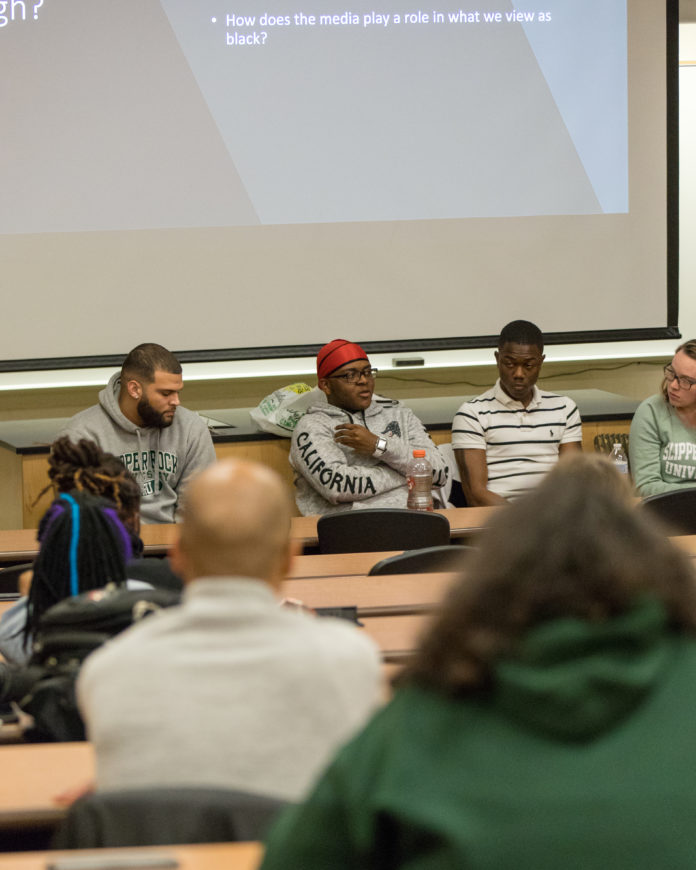The Black Action Society (BAS) held a panel discussion on colorism including topics about being “black enough,” experiences in the world and colorism in the media.
The panel consisted of Kennedy Koe, secretary of BAS and a sophomore secondary education and spanish major; Amir Hill-Davis, a senior homeland security major with minors in writing and Arabic; Nature Askew, parliamentarian of BAS and sophomore physical activity and business management major; Donovan Ford, public relations chair of BAS and junior marketing major; and Cinnamon Price, a freshman biology major.
Taron Polk, BAS vice president and senior marketing major and management minor, led the discussion with prewritten questions on slides for the audience to see. One of the first topics discussed was the phrase “black enough”. Most of the panel agreed that the phrase is ignorant.
“The phrase is meant to separate us from the inside,” said Askew. “Once you say you aren’t black enough, you start to separate yourself.”
Transitioning into how the role of media impacts how blacks view themselves, themes of drugs and poverty arose.
Hill-Davis said that the media puts blacks in positions where they feel they must show off their wealth to ride the stereotype. Ford would further agree that media enforces stereotypes.
“Media enforces the stereotypes,” said Ford. “When a black guy commits a crime, there’s more emphasis on making sure his mug shot is out, but when there is a white guy arrested, they show pictures from graduation and with their family.”
Price believes that there are two sides to the media: the black media and the outside media. She said that the media takes the worst parts and shows it to the public.
“The outside media isn’t showing the good parts, but we know where to look and have inspiration to look and who to look up to,” said Price.
However, some panelists believed that members of the black media need to start doing more and supporting each other and their creations.
Hill-Davis said that one of the main problems in black media is that the movie industry only shows one type of lifestyle and believes that the media needs to start showing that blacks are more than what they show.
“A lot of movies are showing the black struggle and slavery, but what about everything in between,” said Hill-Davis.
The experiences in between what Hill-Davis talked about were discussed by other panelists during the life experience questions and connection to the African American community. Hill-Davis said that his “blackness” was questioned by others, other cultures and himself.
“My blackness gets questioned in sports,” Hill-Davis said. “I grew up playing basketball and football, but those were never my sports. I’ve been playing volleyball since I was in 7th grade and people ask ‘isn’t that a white person sport?’”
Questioning someone’s blackness was another theme brought up at the panelist discussion.
Askew said that just because other blacks grew up differently, it doesn’t mean that they are any less black than someone else.
The discussion ties into colorism and Hill-Davis brought up the brown paper bag test. The closer slaves were to being black (darker than the color of the paper bag), the further they were from the house.
“That is the origin of colorism and it divides us to this day,” Hill-Davis said.
The panelists agreed that colorism is everywhere and occurs in other cultures as well. Koe would add her belief that colorism is hard to understand.
“We associated the lighter end [of black] with difference races than black, but they can be anywhere on the spectrum and still be black,” Koe said.
To end the discussion, Polk asked the panelists and audience members about solutions. The general idea was to continue hosting events and discussions similar to the “Am I Still Black If” event to educate not only themselves, but others as well.
“People want change but aren’t willing to do something about it,” Askew said.









